#Sarah Cory
Text

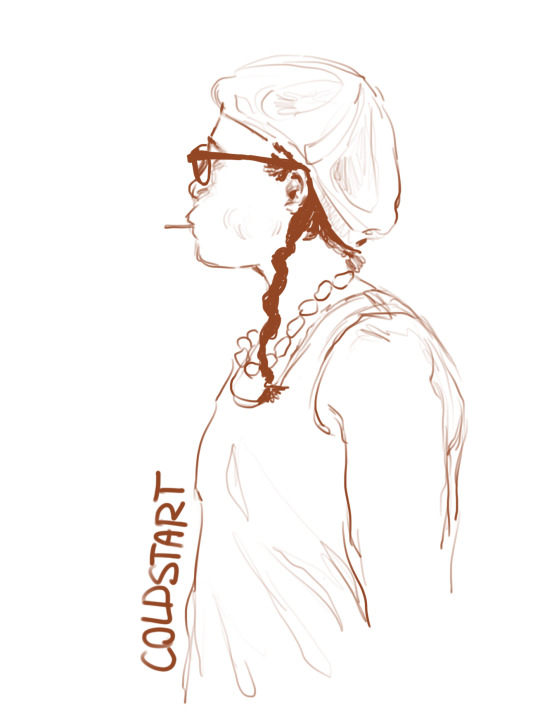
40 notes
·
View notes
Text
couples in trailer park boys that are canon because i said so




#tpb#trailer park boys#ricky lafleur#julian tpb#j-roc tpb#t tpb#sarah tpb#lucy tpb#cory and trevor#gay couples#like... these arent even headcanons these are basically canon in the show#like cmon#trailer park queers
370 notes
·
View notes
Text
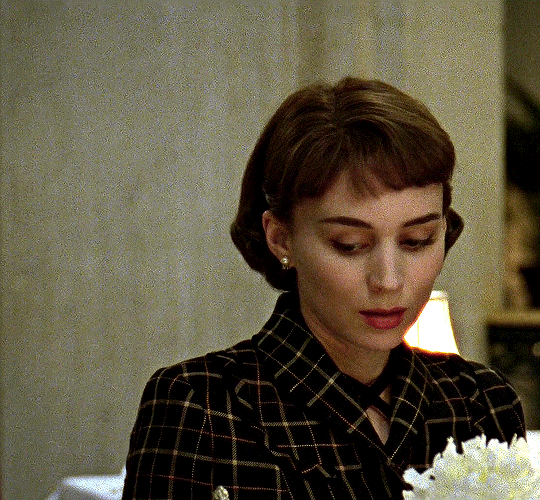
CAROL 2015
I want you to imagine me there to greet you, our lives stretched out ahead of us, a perpetual sunrise. But until then, there must be no contact between us. I have much to do, and you, my darling, even more. Please believe that I would do anything to see you happy.
#carol#2015#cate blanchett#rooney mara#sarah paulson#jake lacy#john magaro#cory michael smith#carrie brownstein#kevin crowley#nik pajic#kyle chandler
16 notes
·
View notes
Text
it’s been close to 24 hours since that incident but Cory saying “fucking Bowie Jane” has not left my mind

#bb25#bb25 cory#bb25 bowie jane#fuckin bowie jane#can’t believe that’s a thing#it’s this season’s fuck Sarah Beth and I said that shit
21 notes
·
View notes
Text
Children ages 14 and 15 would no longer need a work permit or parental permission to get a job under a bill Republican Wisconsin lawmakers released on Friday.
The proposal comes amid a wider push by state lawmakers to roll back child labor laws and despite the efforts of federal investigators to crack down on a surge in child labor violations nationally.
Under current law, 14- and 15-year-olds in Wisconsin are prohibited from working most jobs unless they have permission from a parent or guardian and have verified their age with the state Department of Workforce Development. The Department can revoke youth work permits at any time if it believes a child’s safety is being threatened.
Sen. Cory Tomczyk and Reps. Clint Moses and Amy Binsfeld, the Republicans sponsoring the bill, called youth work permits “needless administrative barriers that slow down the hiring process.”
“It’s important that young people have the opportunity to work without having to endure excessive government regulation,” they said in a statement asking other lawmakers to cosponsor the bill.
The bill continues to require employers to keep their own records of employees’ ages and hours worked, but without work permits verified by a state agency, companies caught violating child labor laws can more easily claim ignorance.
Earlier this year, the Labor Department fined Wisconsin-based meat packing contractor Packers Sanitation more than $1.5 million for employing at least 100 children, some as young as 13, to clean dangerous equipment such as bone saws and skull splitters in plants across the U.S. The company claimed it wasn’t aware that those workers were minors but said it has since taken steps to improve the way it verifies employees’ ages.
State lawmakers across the country, largely Republicans, have in recent years embraced legislation that would allow kids to work longer hours and in more hazardous occupations. Many such bills were proposed as solutions to worker shortages, but advocates against child labor have decried the measures as needlessly endangering children.
Republican Arkansas Gov. Sarah Huckabee Sanders signed a law in March eliminating permits that, similar to those in Wisconsin, required employers to verify a child’s age and obtain a parent’s consent. Sanders later signed separate legislation raising civil penalties and creating criminal penalties for violating child labor laws, but advocates worry that eliminating the permit requirement makes it significantly more difficult to investigate violations because there are fewer records of where kids are being employed.
Earlier this year, Wisconsin Republicans proposed allowing children as young as 14 to serve alcohol in restaurants and bars. If that bill passed, Wisconsin would have the lowest such limit nationwide, according to the National Institute on Alcohol Abuse and Alcoholism.
The work permits bill proposed Friday follows little more than a month after a 16-year-old boy in northern Wisconsin died while working at a sawmill. Initial reports suggest that Michael Schuls was performing work allowed by state laws when he was killed by a wood-stacking machine, but his death and the deaths of other teen workers this summer have brought increased attention to child labor rules.
Democratic Gov. Tony Evers is unlikely to sign either of the Wisconsin proposals into law if they pass the Republican-controlled Legislature. He vetoed a bill last year that would have let 14- and 15-year-olds work later hours during the summer.
Evers’ Republican predecessor, former Gov. Scott Walker, signed a bill in 2017 that removed work permit requirements for 16- and 17-year-olds.
#us politics#news#the associated press#ap news#2023#republicans#conservatives#gop#republican family values#child labor#work permits#wisconsin#gov. tony evers#Wisconsin Department of Workforce Development#Cory Tomczyk#Clint Moses#Amy Binsfeld#deregulation#deregulate deeze nutz#Gov. Sarah Huckabee Sanders#Arkansas#Scott Walker
20 notes
·
View notes
Text


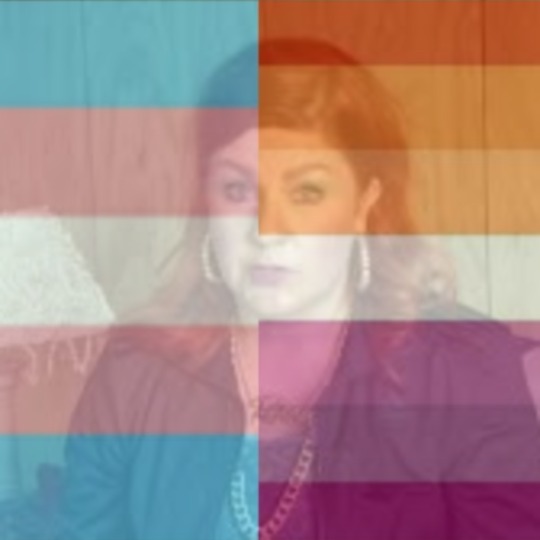



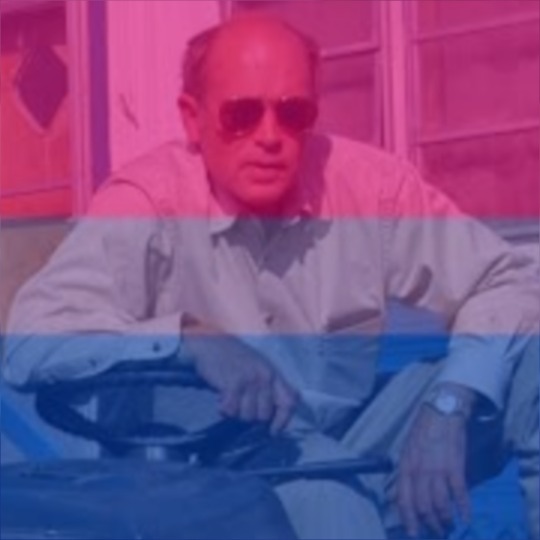







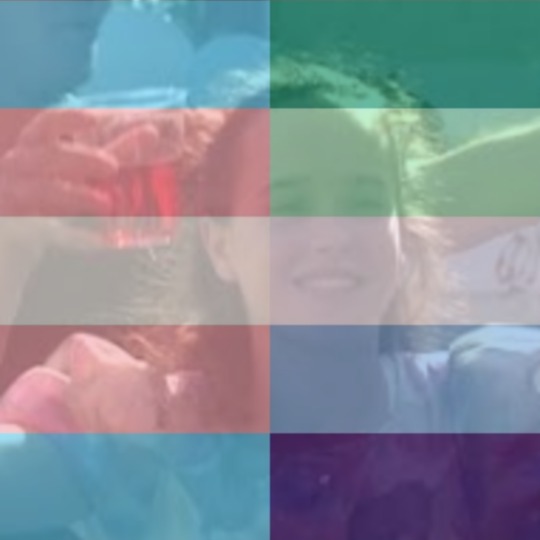

Trailer Park Boys headcanons!
Ricky - Bisexual (he/him)
Julian - Gay man (he/him)
Bubbles - Nonbinary, Straight (he/they)
Sarah - Trans, Lesbian (she/they; futch/butch)
Trinity - Nonbinary, Demisexual, Straight (they/she)
Lucy - Homoflexible, Heteroflexible (she/her)
Jim Lahey, Randy, George Green, Sam Losco - [canon] Bisexual (all uses he/him)
Cory - Kenorosboy, Gay (they/he)
Trevor - Kenochoric, Gay (it/he)
Barbara - Heteroflexible, Bi Lesbian (she/her)
Jacob - Bi Darcian [<- term for hetero attraction to women] (he/him)
Treena - [Closeted] Trans, Gay (really wants to use he/him and experiment with they/them; actor is a trans guy IRL)
Thomas - Gay (he/they)
#trailer park boys#ricky lafleur#julian#bubbles#lucy#sarah#jim lahey#randy#barbara lahey#jacob collins#thomas collins#cory#trevor#trinity#treena#sam losco#george green#gay#lesbian#bisexual#transgender#nonbinary#demisexual#bi lesbian#heteroflexible#homoflexible#kenorosboy#kenochoric#bi darcian#straight
27 notes
·
View notes
Text
Happy Arab American Heritage Month 2023!
It’s Arab American Heritage Month, and as always, we’re celebrating with books starring Arab American protagonists! Please note that this post only includes books that haven’t been included in previous years, so for even more recs, click here!
Man O’War by Cory McCarthy
The jellyfish commonly known as a Portuguese man o’ war is neither Portuguese, nor a jellyfish, nor a man, nor even a singular…

View On WordPress
#A Guide to the Dark#Cory McCarthy#Danny Ramadan#Lebanese American#Man O&039;War#Meriam Metoui#Palestinian American#Sarah Cypher#Syrian Canadian#The Foghorn Echoes#The Skin and its Girl
37 notes
·
View notes
Text
Shawn's life falls apart around him after receiving a letter from Virna stating that she isn't his biological mother. With his father dead and mother still on the run (and probably never coming back), Shawn submerges himself in the belief that everyone he cares about is going to leave. Except Mr. Turner is doing the opposite of running away, and Shawn doesn't know which is scarier.
Diverges from the episode 7x12 Family Trees.
Happily ever after?
Hah.
How could anyone concern themselves with a happy ‘ever after’ when they couldn’t even have a happy middle?
My father’s dead.
Of course. You knew that already.
I don’t have a mom.
Oh, but you do…
My mom doesn’t want to be found—not by me.
Finally understand something, do you?
Shawn tried to clear his thoughts. Focus. But he couldn’t even do that. Couldn’t do anything.
Couldn’t stop his dad from dying.
Couldn’t find his mom.
The car swerved as his vision blurred. It baffled him that driving under the influence of alcohol was illegal, but driving under the influence of frustration wasn’t. And people listened to this system? It couldn’t even keep a madman off the road…
or help someone find their mom.
Shawn should have listened to Cory from the beginning, should have put the letter away without looking at its contents. What had he expected? His mom to say that she was on her way back? Or that she missed him? Loved him?
Yeah, right.
He should have listened to Cory and not searched for his biological mother after he’d read the letter. Accepted that he didn’t know who his mom was and move on with his life.
Knowing who she was wouldn’t change his past anyway.
He should have listened to Cory, left his hopes in a bin and thrown his envelope of “answers” right in there with them.
Because Cory was right. Everything had been going well—for the most part. Everyone had been happy—for the most part. Shawn’s family always spelled trouble, he should have known an innocent letter wouldn’t have been so innocent coming from his mother. But that was the problem…everything was going well, everyone was happy, but he wasn’t.
It was selfish, opening the letter. He wasn’t anyone important, not like Cory and Topanga and Angela and the Matthews, he should have just dropped it.
Stop whining.
The car swerved again and this time Shawn couldn’t catch it. He bounced off the road, steering wheel spinning out of control. It was almost funny, how time slowed enough for him to count each rock he rolled over and each branch he snapped. And upon impact with the lamppost, the dented metal was perfectly accentuated against the gleam of his headlights.
Shawn’s head snapped against the headrest. He heard a buzz; it drowned out everything. In his haze he couldn’t tell if he was suffering from the crash or if being cut off from his own frazzled thoughts was causing it. He hoped it was from the crash. Maybe if he hit his head hard enough he could leave everything behind, float into oblivion, and find happiness.
Ao3 FFN
#boy meet world#boy meets world fanfiction#fanfiction#shawn hunter#jonathan turner#Sarah (OC)#jack hunter#cory matthews#topanga lawrence#found family#angst#angst with a happy ending#incomplete
11 notes
·
View notes
Text
TERRIFIER 2 (2022)





























Un an après la précédente boucherie d'Art le clown, Sienna Shaw participe à une soirée d'Halloween avec ses amies. Alors que son jeune frère développe une fascination malsaine pour Art, elle finit par croiser la route du clown tueur sanguinaire.
#Terrifier 2#Damien Leone#Paul Wiley#David Howard Thornton#Lauren LaVera#Elliott Fullam#Sarah Voigt#Kailey Hyman#Casey Hartnett#Charlie McElveen#Amelie McLain#Johnath Davis#Samantha Scaffidi#Leah Voysey#Chris Jericho#Felissa Rose#Owen Myre#Griffin Santopietro#Devon L. Roth#Amy Russ#Cory DuVal#Staci Dickerson#Marisa Bertani#Tamara Glynn#Reid Richards#Sarah Grace Sanders#Briana Calcagno#Katie Maguire#Gilbrando Acevedo
4 notes
·
View notes
Text
corys eyes ARE like the jungle he smiles it IS like the radio she’s spitting out facts and truths!
YOU’RE BEAUTIFUL EVERY LITTLE PIECE LOVE! DON’T YA KNOW YOU’RE REALLY GONNA BE SOMEONE. genuinely helped my self esteem a bit i think
#cory who im making this song about ME#sarah talks#debut listening party#taylor swift#IF WHAT YOU ARE IS A DAYDREAM I NEVER GET TO HOLD
20 notes
·
View notes
Text

Zu Carol, Todd Haynes todschickem Liebesfilm nach Patricia Highsmith, den wir auch dringend einmal wieder anschauen mussten, finden sich hier schon, besonders hübsch präsentiert, sämtliche nützlichen Informationen.
#Carol#Cate Blanchett#Rooney Mara#Kyle Chandler#Jake Lacy#Sarah Paulson#Cory Michael Smith#Film gesehen#Todd Haynes#Patricia Highsmith
2 notes
·
View notes
Video
youtube
Making costumes for Sarah Bryant, and trying them out in the Special Sparring DLC mode of Virtua Fighter 5 Final Showdown on PS3!
#vf#vf5fs#virtua fighter#virtua fighter 5 final showdown#sarah bryant#ps3#gameplay#lets play#costumes#planet harriers#cory#game#games#gaming#gaming video#video game#video games#fighting game#fgc#fighting games
3 notes
·
View notes
Photo
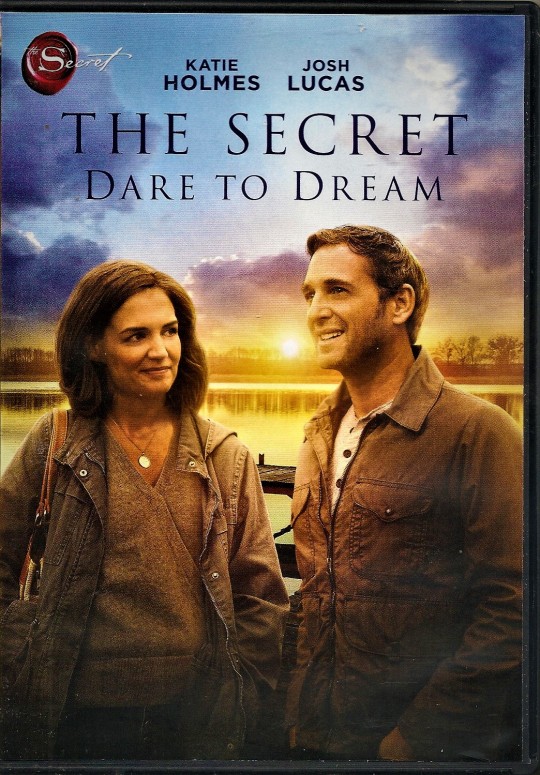
Bad movie I have The Secret: Dare to Dream 2020
#The Secret: Dare to Dream#Katie Holmes#Josh Lucas#Celia Weston#Jerry O'Connell#Sarah Hoffmeister#Aidan Pierce Brennan#Chloe Lee#Katrina Begin#Sydney Tennant#Yohance Myles#Jessie Terrebonne#Rosemberg Salgado#Samantha Beaulieu#Jeremy Warner#Han Soto#Jessica Harthcock#Joseph McDonald Brubaker#Cory Scott Allen#Jennifer Hamilton Collins#Thomas Michael Finger#Betsy Borrego#Tracy Brotherton#Greg Carver#Michelle L. Clarke#Rachelle Hardy#Timothy Hinrichs
1 note
·
View note
Text
bro I'm fucking BORED
#is no one gonna match my freak#when my wife is busy who is gonna match my freak#my freak is thinking about things all the time and wanting to talk about them all the time#my freak is kelly hayes sarah kendzior cory doctorow spencer ackerman antonia bird chris claremont park chan wook and honestly etc#and we play music on adblocked youtube for each other while we talk
1 note
·
View note
Text
Ida B. Wells in Brooklyn
Just 30 years after the Civil War, the Gilded Age, with its emphasis on industrialization and progress, held a special promise for Black Americans. Ida B. Wells sought to realize that promise.
— By Cori Brosnahan | Published: February 2018 | November 04, 2023

On October 5, 1892, journalist and activist Ida B. Wells addressed a packed house at New York’s Lyric Hall. The subject was lynching. Wells had recently published an editorial that exposed the lies used to justify the loathsome practice. The white press had long maintained that lynchings were a response to the rape of white women at the hands of black men. After three of Wells’s friends were lynched in Memphis, she began to investigate the circumstances of their murders and of others. She found that the allegations of rape were false; rather, blacks were being lynched for things like registering to vote, starting businesses, or simply refusing to defer to whites in a manner they deemed acceptable. That night at Lyric Hall, Wells was there to share what she had learned.
The lynching editorial was in fact the reason that Wells was living in New York, rather than her home in Memphis, in the first place. Upon its publication, the offices of the Memphis Free Speech, the newspaper Wells co-owned, were destroyed and one of her partners was pistol-whipped. At the time, Wells was traveling, unaware of what was happening at home until she reached New York. Once arrived, she stayed, taking up residence in Brooklyn — at the time, its own city. Despite severe homesickness, she soon became involved in the area’s rich black cultural life.
The Gilded Age, with its emphasis on industrialization and progress, held a special promise for black Americans. Thirty years after the Civil War, they were going to school in record numbers. The illiteracy rate dropped precipitously, making way for a reading community large enough to support some 200 weekly black newspapers across the country. A rapidly growing number of lyceums sponsored lectures, discussions, and formal debates.
“In this period, we begin to see black consciousness being raised,” says historian Paula Giddings, author of Ida, A Sword Among Lions. “Black people are incredibly progressive because they think this enlightenment of society means the end of racism. The stakes are really high.”
It was at one of these lyceums, the Brooklyn Literary Union of the Siloam Presbyterian Church, that Ida debated Maritcha Remond Lyons, an assistant school principal. After the debate — apparently won by Lyons — Wells asked the older woman for public speaking tips. Through Lyons, Wells would be introduced to a circle of extraordinary women — journalists, educators, and reformers — who worked together to improve life for black Americans and women.
“This is a period where black women are moving into the public sphere and having their voices heard in ways that are unprecedented,” says Gidding. “They’re all trying to figure out what is the best, most effective representation. Wells’s anti-lynching campaign is a catalyst for them all coming together on this very important issue.”
Wells’s speech at Lyric Hall was a testament to their efforts. Proceeds from the event made it possible to publish Wells’s editorial as a pamphlet, which she dedicated to the “Afro-American women of New York and Brooklyn.” Wells would continue to spread her message on a lecture circuit, while black women’s groups continued to proliferate. Less than four years later, they would unite as the National Association of Colored Women's Clubs. Reflecting the spirit of self-empowerment and love for one’s community was its motto: “Lifting as we climb.”
Here are some of the Women in Ida B. Wells’s Brooklyn Circle:
1. Maritcha Remond Lyons

New York Public Library, Schomburg Center for Research in Black Culture, Photographs and Prints Division
Maritcha Remond Lyons taught in Brooklyn public schools for nearly 50 years. She was born in New York City, where her family’s home served as a stop on the Underground Railroad. After the racially-charged New York City Draft Riots in July of 1863, the Lyons family fled for safer ground. Maritcha’s parents sent her to Providence, Rhode Island, where segregation threatened to interrupt her education; the city had no high school for black students, and she was denied entry to the all-white high school. Lyons, just 16, successfully sued the state, and became the first black student to graduate from Providence High School in 1869.
Upon graduation, Lyons accepted a teaching job in Brooklyn. Over the next five decades, she would become an assistant principal. After helping to plan Ida B. Wells’s powerful anti-lynching testimonial, Lyons and Victoria Earle Matthews founded the Women’s Loyal Union of New York and Brooklyn, a club dedicated to civil rights and social service. Lyons would team up with Matthews again in 1897 to found the White Rose Mission, a shelter for young black, female migrants. The organization operated until 1984.
2. Sarah Garnet

New York Public Library, Schomburg Center for Research in Black Culture, Manuscripts, Archives and Rare Books Division
Educator and suffragist Sarah Garnet was the first black female school principal in the New York City public school system. She was born in Brooklyn to a well-to-do family, the eldest of 11 and sister to Susan Smith McKinney, who would become the first black woman in the state of New York to earn a medical degree. She was 14 when she became a teaching assistant in 1845; she retired over 50 years later as a principal.
After her first husband died, Garnet married abolitionist and minister Henry Highland Garnet, who was appointed U.S. Minister to Liberia in 1881, but died two months into his posting. When Ida B. Wells met Garnet, she was living on De Kalb Avenue, where she hosted events like a black art exhibit that Wells reviewed. Garnet also ran a seamstress shop in Brooklyn for nearly 30 years. The shop would become a meeting place for members of the Equal Suffrage League, which she founded in the late 1880s. Garnet, who worked with white suffragists like the wealthy Alva Vanderbilt, was able to draw many black women into the movement. After the National Association of Colored Women Clubs was founded in 1896, she served as superintendent of suffrage.
3. Susan Smith McKinney

New York Public Library, Schomburg Center for Research in Black Culture, Photographs and Prints Division
In 1870, Susan Smith McKinney became the first black woman in New York state — and the third nationwide — to earn a medical degree. McKinney was born in Brooklyn to successful farmers; her sister was Sarah Garnet, who would become the first black female school principal in the New York City public school system. Initially, she studied music, but ultimately decided to pursue a career in medicine — perhaps inspired by the New York cholera outbreak of 1866 and the death of two of her brothers during the Civil War. She graduated as class valedictorian from the New York Medical College for Women in 1870.
McKinney ran a private practice in her home for 25 years, which was so successful that she opened up another office in Manhattan. Her practice focused on prenatal care and pediatrics, and she treated a diverse group of patients. In 1881, she co-founded the Brooklyn Women's Homeopathic Hospital and Dispensary to serve the black community. She also practiced at the Brooklyn Home for Aged Colored People, where she sat on the board. Active in the social issues of the day, McKinney was a member of the Women's Local Union, founded by Maritcha Lyons and Victoria Earle Matthews, as well as the Equal Suffrage League, founded by her sister.
4. Victoria Earle Matthews

Victoria Earle Matthews was a writer and activist, whose articles and short stories explored black struggle and identity. Matthews was born in 1861 to an enslaved woman and a white man — likely her master. After the Civil War, her mother brought her to New York City, where Matthews worked as a maid, but managed to educate herself in the library of one of her employers. As a young woman, she became a journalist and short story writer, and increasingly dedicated herself to the issues of suffrage and civil rights. It was Matthews who suggested that Ida B. Wells give an anti-lynching testimonial. Afterwards, she worked with Maritcha Lyons to establish the Women’s Loyal Union of New York and Brooklyn.
When Matthews’s only son died at the age of sixteen, she pledged to care for the children of others. She found ample opportunity to do so after an investigation into so-called “employment agents” revealed that the poor, young, black women they lured from the South to the North with the promise of work were really being handed over to brothels. To provide the young women with shelter, education, and services, Matthews teamed up with her friend Maritcha Lyons to found the White Rose Mission in 1897.
5. Ida B. Wells
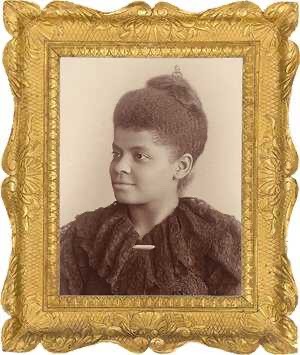
Mary Garrity/National Portrait Gallery, Smithsonian Institution
Journalist and activist Ida B. Wells rose to national attention with her anti-lynching campaign, and spent the rest of her life fighting for the rights of black Americans and women. Wells was born into slavery in Mississippi just a few months before the Emancipation Proclamation. When she was a teenager, both of her parents succumbed to a yellow fever epidemic, leaving Wells in charge of her siblings. She raised them while working as a teacher, eventually moving the family to Memphis, where her aunt lived and the pay was better.
In 1884, Wells was on a train when the conductor demanded she give up her seat in the first-class ladies car and move to the smoking car. When she refused, she was dragged out of the car. Outraged, Wells wrote an article about the incident and successfully sued the Chesapeake & Ohio Railroad Company for violating the 1875 Civil Rights Act. When the railroad company managed to get the verdict reversed, Ida was left disappointed — but determined.
Wells soon began writing articles about race in black newspapers, and bought a share of her own, the Memphis Free Speech, in 1889. When one of her friends as lynched, Wells began an investigation into his killing and others. When she published an editorial on her findings, a mob destroyed the offices of her newspaper and pistol-whipped one of her partners. Wells, who had been traveling at the time, was effectively exiled, and took up residence in Brooklyn and then Chicago. She spent much of her time on the road, traveling throughout the country and in Europe on her anti-lynching campaign. A founding member of the NAACP, she also advocated for suffrage and urban reform.
#Gilded Age | Article#Cori Brosnahan#Ida B. Wells | Brooklyn | New York | United States 🇺🇸#Brooklyn Circle#Maritcha Remond Lyons#Sarah Garnet#Susan Smith McKinney#Victoria Earle Matthews#Ida B. Wells
0 notes
Text
TOR WRAPPED 2023
Books for every Spotify Wrapped listener class!
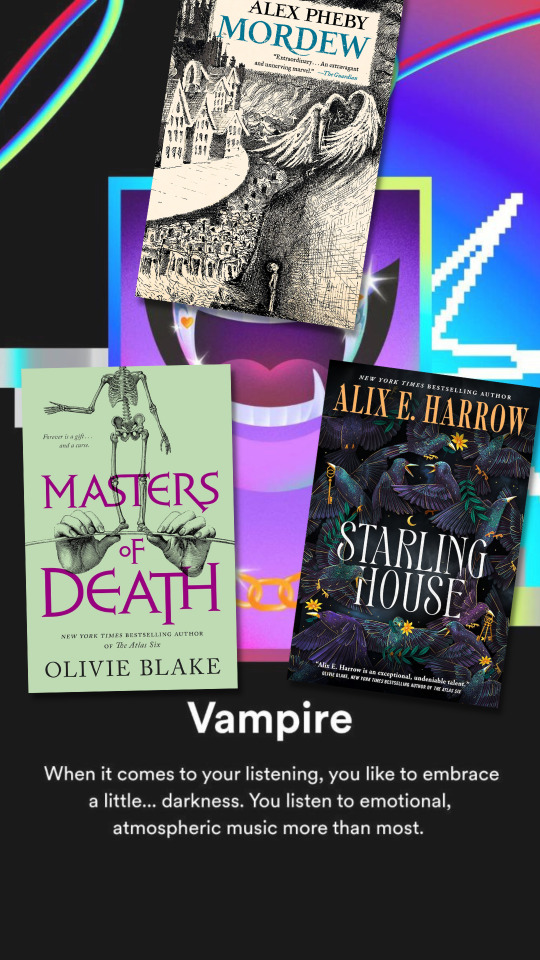
VAMPIRE
Masters of Death by Olivie Blake
Starling House by Alix E. Harrow
Mordew by Alex Pheby
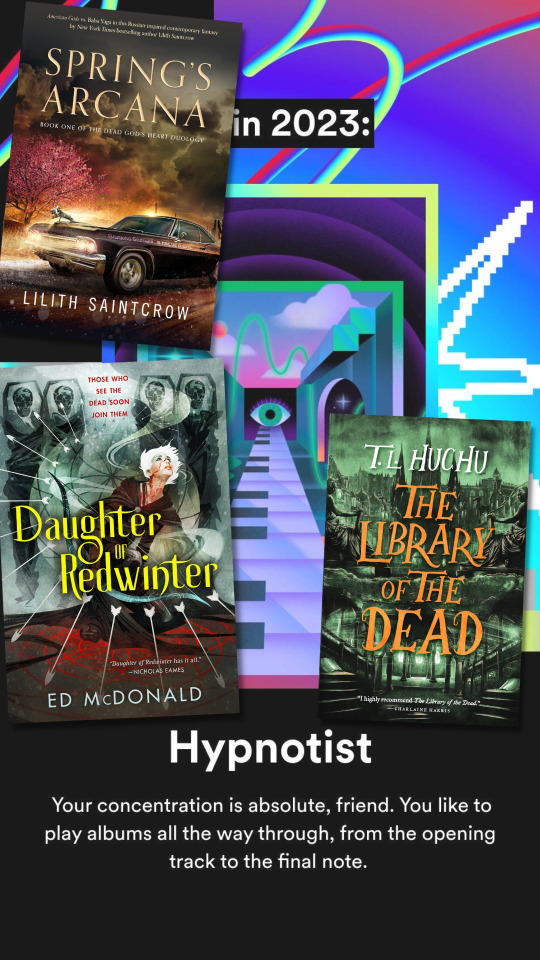
HYPNOTIST
The Library of the Dead by T. L. Huchu
Daughter of Redwinter by Ed McDonald
Spring’s Arcana by Lilith Saintcrow

ALCHEMIST
The Bone Orchard by Sara A. Mueller
The Genesis of Misery by Neon Yang
The Echo Wife by Sarah Gailey

SHAPESHIFTER
Thornhedge by T. Kingfisher
The Warden by Daniel M. Ford
Wolfsong by TJ Klune

FANATIC
Mistborn by Brandon Sanderson
Bookshops & Bonedust by Travis Baldree
The Fragile Threads of Power by V. E. Schwab
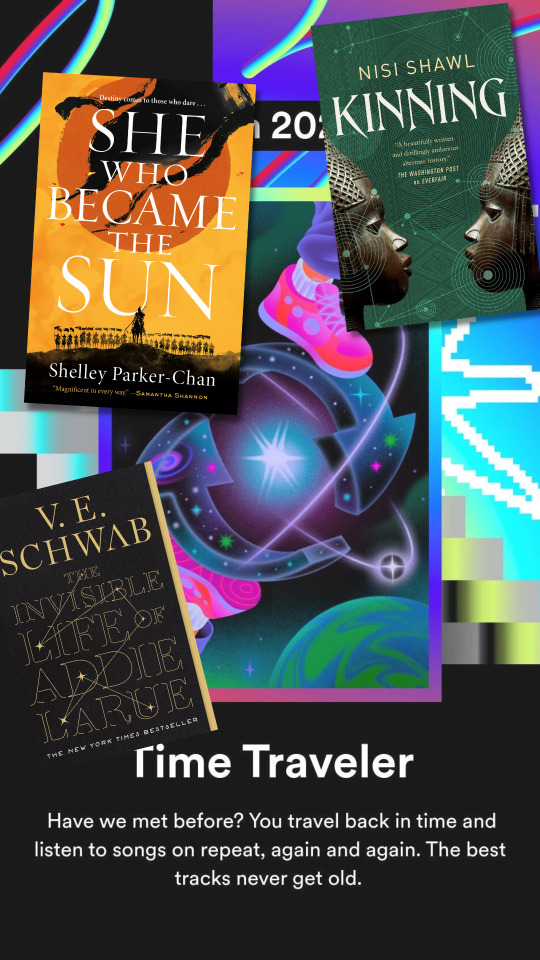
TIME TRAVELER
Kinning by Nisi Shawl
She Who Became the Sun by Shelley Parker-Chan
The Invisible Life of Addie LaRue by V. E. Schwab

MASTERMIND
The Atlas Six by Olivie Blake
Red Team Blues by Cory Doctorow
Exadelic by Jon Evans

COLLECTOR
The Wolfe at the Door by Gene Wolfe
Cassiel’s Servant by Jacqueline Carey
The Great Hunt by Robert Jordan
#spotify#spotify wrapped#tor books#the great hunt#the wolfe at the door#cassiel's servant#jacqueline carey#robert jordan#gene wolfe#exadelic#jon evans#red team blues#cory doctorow#the atlas six#olivie blake#kinning#nisi shawl#she who became the sun#shelley parker-chan#the invisible life of addie larue#v e schwab#mistborn#brandon sanderson#bookshops & bonedust#travis baldree#the fragile threads of power#thornhedge#t kingfisher#ursula vernon#wolfsong
5K notes
·
View notes